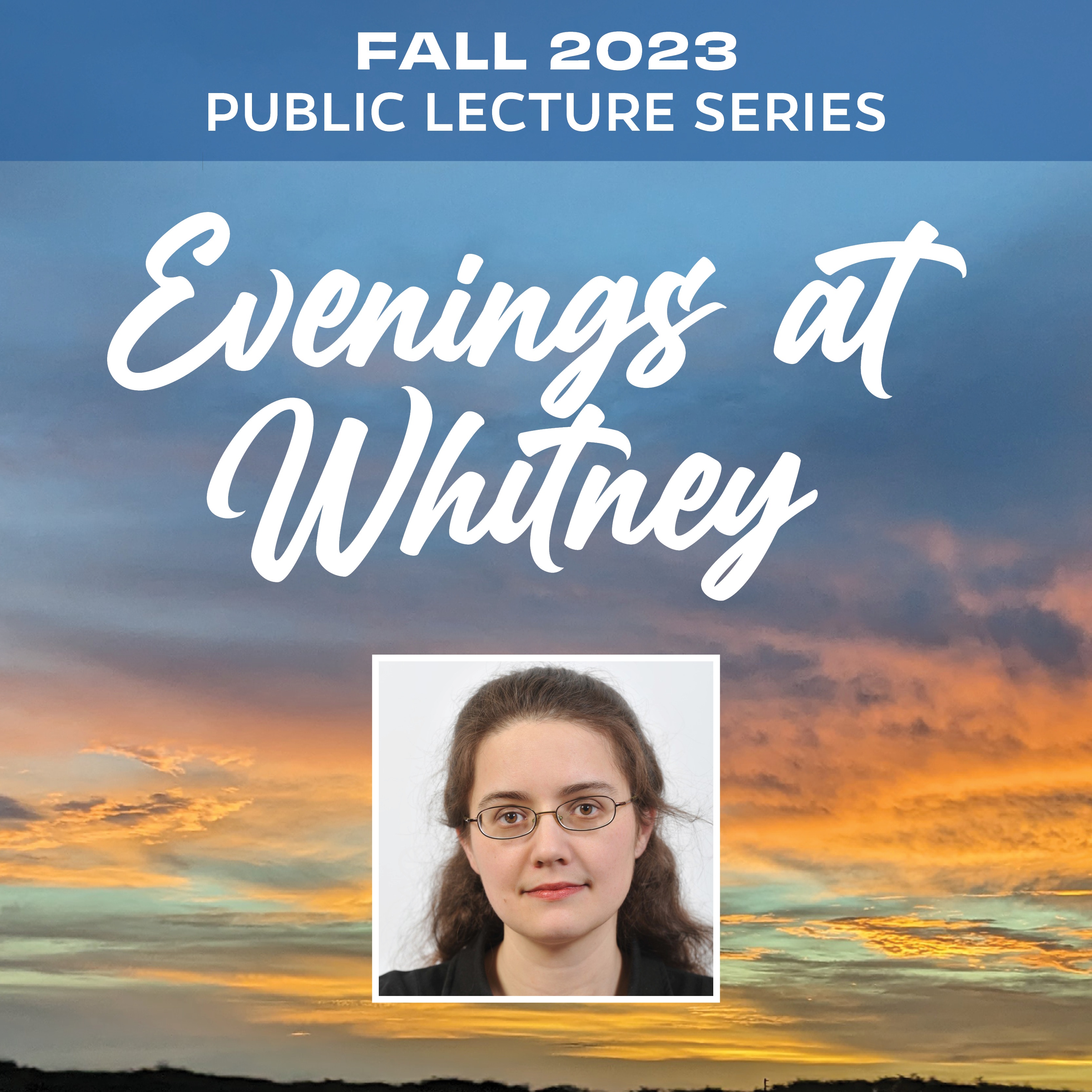 The Whitney Laboratory for Marine Bioscience
The Whitney Laboratory for Marine Bioscience

The University of Florida Whitney Laboratory for Marine Bioscience is excited to announce the return of the Evenings at Whitney Lecture Series in fall 2023. The first lecture of the fall series, hosted by the Whitney Laboratory, will be Thursday, September 14, 2023, at 7 p.m. with the program titled “Tracking global biodiversity by harnessing the wind”. Elizabeth Clare, PhD, Professor of Biology at York University, will be the speaker.
This free lecture will be presented in person at the UF Whitney Laboratory Lohman Auditorium, 9505 Ocean Shore Boulevard, in St. Augustine. Those interested also have the option of registering to watch via Zoom live the night of the lecture.
https://ufl.zoom.us/webinar/register/WN_Qh61zq8MQvenHsh8qJ4
The accelerating loss of biodiversity is threatening ecosystems on a global scale with up to 69% declines reported in populations of plants and animals around the world. International agreements ask countries to report on biodiversity inventories and monitor shifts in community composition. However, quantifying biodiversity anywhere is a challenge and monitoring continual change is impossible at almost any scale. A commonly stated problem is that the required infrastructure for global monitoring does not exist. However, such a system may already be operating, quietly in almost every country on earth unnoticed.
In this presentation Dr. Clare will describe the power of “environmental” or “eDNA”, a type of genetic material which seems to exist all around us all the time, an almost invisible source of information found in the water, soils and even the air we breathe. She will describe how it has been used as a tool for decades in the study of aquatic life but how we are quickly realizing that its most extraordinary power might actually be on land.
We now have evidence that globally distributed and highly regulated air monitoring networks have been gathering local biodiversity data in the form of eDNA for decades as a result of their routine functioning, but the ecological significance of these samples has gone unnoticed. In some regions, samples have been stored for decades, presenting the potential for high resolution ecological time series data, often sampled daily or weekly. This material from thousands of existing globally deployed stations could provide an extraordinary opportunity for detailed monitoring of life on land using an existing, replicated transnational design - and these networks are already in operation.
This presentation will be a story, about how unusual collaborations and an accidental conversation between physicists and biologists might solve a crisis in global biodiversity monitoring and she will speculate on how we might be one day soon be able to read planetary diversity in same way we read the weather forecast, giving us insights into our changing global ecology on a scale and speed never before possible.
Prof Elizabeth Clare completed her PhD at the University of Guelph in Canada and then a NSERC fellowship at the University of Bristol UK. She was appointed as a member of faculty at Queen Mary University of London in 2013 and moved to York University in Toronto Canada in 2021. The Clare Lab specializes in the use of DNA based tools for the description and analysis of Biodiversity. Her background is in the taxonomy and diversity of central american bats and Elizabeth was one of the first people in the world to use DNA metabarcoding to study dietary ecology, publishing dozens of scientific papers on the interactions between predators and prey, pollinators and flower and parasites and hosts using these tools. In addition to her work on dietary ecology and food webs, she has helped develop a number of tools to collect and study DNA that moves through the environment including the use of DNA from terrestrial vertebrates found in the guts of leaches and dung beetles and aquatic populations in rivers. Most recently her team demonstrated for the first time that the DNA from terrestrial mammals and birds can be collected directly from air samples and this has quickly moved to develop non-invasive systems to study terrestrial species at risk and a new discovery that the world’s air quality monitoring networks have been capturing and storing data required to monitor terrestrial biodiversity at a global scale unnoticed for decades. Through her work in the global “BIOSCAN” program they are attempting to establish systems to monitor life on earth on a scale never before attempted.